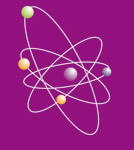ICPEAC
Central Website
ICPEAC: Report on the future
![]()
Home > Report on the future: page 2
This report describes the findings and recommendations of a recent study regarding the future of ICPEAC.
ICPEAC Futures Committee
Report and Proposals
| 1, 2 |
5. ICPEAC should remain active in exploring means to broaden its scope. Two areas to be encouraged are identified: (i) Applications of atomic collisions, (ii) Emerging new fields topically related to the core programme.
The central theme of the meeting is collisions. Within this context, the meeting has a good record of encouraging growing areas of relevance, for example, photonic collisions and interactions and collisions with surfaces and clusters. There is a strong desire to continue this process of assimilation where appropriate.
Two general areas come to the fore.
- Applications of atomic collisions
As the subject becomes more mature, coupled with a decrease in funding for basic science, it is recognised that some applications of the subject are increasingly of interest, both to those from within the collisions community and some who are keen to learn from the community and to bring in their expertise from different backgrounds.
Areas identified include biophysics, atmospheric physics, astrophysics, plasma physics,
- Emerging new fields that are topically related to the core programme of ICPEAC
It is considered that these are most likely to take off where the new area has an input from researchers with a previous affinity to ICPEAC or where a well established conference does not exist. This will obviously be an ongoing process as new areas emerge, but a number of areas are suggested as current candidates:
TESLA-FEL physics
Ultra-short pulse physics, coherent control, short-time correlation of electrons
Artificial atoms, electron correlations in quantum dots
Interactions/fast collisions with cold atoms, molecules, BEC.
Of course the study of electron dynamics/correlations is a focus of some of these topics. It is therefore a case of convincing workers in these areas, particularly where their backgrounds are different from our own, that ICPEAC is the natural outlet for their work.
A number of suggestions are made to encourage the participation of some from these hot topic areas:
(i) Continue to invite speakers from hot topics and applied areas.
In the past this has not generally been followed by an influx of delegates associated with the topic as manifest through the submission of abstracts. Hence more needs to be done. One suggestion is to include a key member from a hot topic area in the General/Executive Committee. Within the present ICPEAC structure this is probably best achieved by encouraging countries, particularly those with larger memberships of the General Committee, to have one member from an emerging sub-field who could encourage participation from that community and educate the General Committee of the field.
(ii) Have a session(s) devoted to a topical theme(s).
(iii) Be equally aggressive in reviewing the success or otherwise of an initiative for a particular sub-field and the hotness of that field with time.
Proposal supported
6. Satellite meetings. Proposals for specialist meetings clustered in time around ICPEAC should be more rigorously vetted by the ICPEAC International Chair to ensure complementarity with ICPEAC.
It is generally considered that the development of short, more specialised meetings on themes associated with ICPEAC has been positive, especially from a scientific perspective. Some of these are now well established and should continue to be encouraged by ICPEAC. However, there are concerns over these meetings and their relationships with the main ICPEAC meeting. These relate mainly to the issues of cost and overall duration. There is a trend (perhaps growing) to hold some of these meetings at venues distant from the main ICPEAC site. This clearly increases the overall cost and there is clear evidence of some deciding to travel, sometimes long distances, to attend either ICPEAC or a Satellite meeting. For those attending both, cost also escalates because, including travel times, the overall length of ICPEAC plus Satellite can stretch to two weeks.
Two possibilities have been raised which are seen as possible solutions to the above concerns:
(i) Bring the Satellites into the main ICPEAC programme.
Two options were put forward, ICPEAC in the mornings with Satellites in the afternoons, and a shorter 2-3 day ICPEAC with corresponding 3-2 day Satellites before or after. There is a view that both, especially the split day option, would be very difficult to co-ordinate between the local ICPEAC organisers and a number of independent Satellite organisers, and would place an unreasonable additional load on the local ICPEAC organisers.
(ii) Hold the Satellites in the same or near-by venues immediately preceding or following the main meeting.
This is seen as the more practical solution.
Given the failure to agree on a way forward, the Futures Committee Chair agreed to temporarily withdraw this proposal. It is a situation which needs to be kept under review.
Albert Crowe
Chair, ICPEAC 2005
